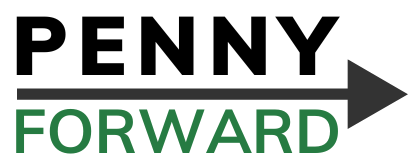Last week, I spilled the beans on how I swiftly transformed my concept of digitizing old-school cassettes and vinyl into a budding online business, Analog Archivers. Sure, it’s not exactly raking in the big bucks just yet, but hey, Rome wasn’t built in a day, right? In the midst of this journey, I realized something crucial: running a small business isn’t just about the hustle; it’s also about understanding the financial nitty-gritty that comes with it.
Let’s debunk a common myth: the misconception that if you’re receiving benefits like Social Security, diving into the world of entrepreneurship is a no-go zone. False alarm, folks! It’s totally kosher to dip your toes into the small business pond while still enjoying those benefits. Here’s the scoop: when it comes to benefits, what they’re really interested in isn’t your revenue but your profit.
So, let’s break it down.
- Revenue: Think of revenue as the cash flow coming into your business from sales. It’s the total income generated before any expenses are subtracted.
- Profit: Now, profit is the name of the game. It’s what’s left over after you’ve deducted all your expenses from your revenue. In other words, it’s your earnings—the sweet reward for your hard work.
Now, here’s where the magic happens. The key to navigating these financial waters is good ol’ bookkeeping. Now, before you start sweating bullets, let me assure you: it’s not rocket science.
- Bookkeeping: Simply put, it’s the art of recording all your financial transactions—every dollar in, every dollar out.
- Financial Transaction: Picture this: every time money moves in or out of your business, it’s like a little dance—a financial transaction. Whether it’s a sale, an expense, or a transfer between accounts, each move gets jotted down in your books.
Recording these transactions is as easy as pie. Let’s take a couple of examples:
- You sell a vintage vinyl record for $50. That’s revenue!
- You purchase a cassette player for $30. That’s an expense!
See? Piece of cake!
Now, here’s the kicker: with the help of bookkeeping software like QuickBooks Online, Freshbooks, or my personal favorite, Wave, you can automate this entire process. Yes, you heard me right—no more late-night date nights with your spreadsheets!
Link up your business accounts, and voila! Every transaction gets recorded automatically. Sure, you might need to lend a hand in categorizing them at first, but fear not—these software wizards learn your habits and start categorizing on autopilot.
And guess what? Many of these software options are free, like Wave, which offers some premium features without costing you a dime. Plus, any fees you do incur? You can chalk ’em up as a business expense. Win-win!
So, what’s next on our entrepreneurial adventure? Stay tuned for next week’s post, where I’ll spill the beans on how I’ve got Wave working its magic for Analog Archivers. And trust me, we’re just scratching the surface. We’ll delve deeper into deciphering your Profit & Loss statement, balancing those sheets, and keeping that cash flow flowing.
Until then, happy entrepreneuring!
Chris Peterson, AFC®
Founder and CEO, Penny Forward

Leave a Reply